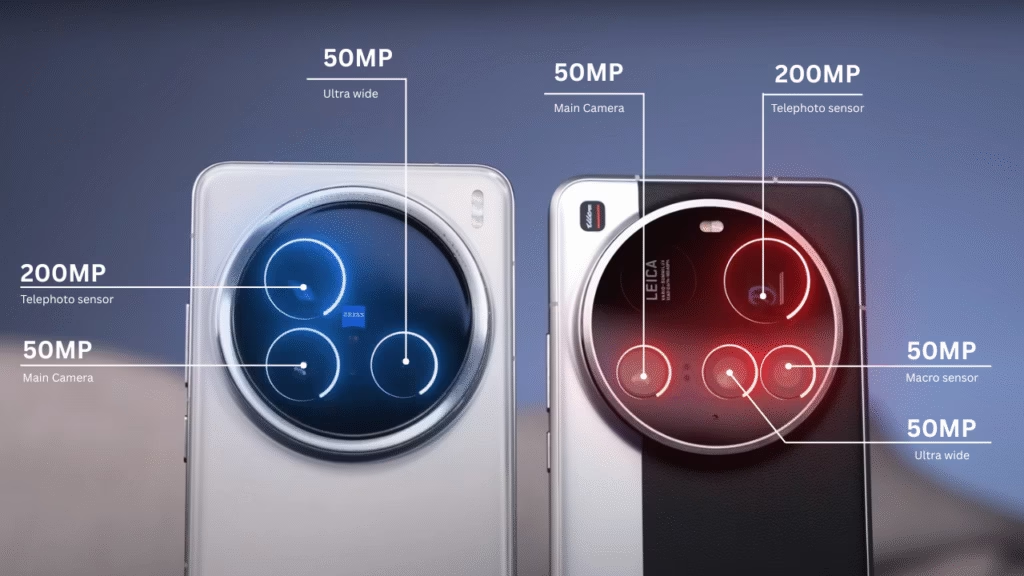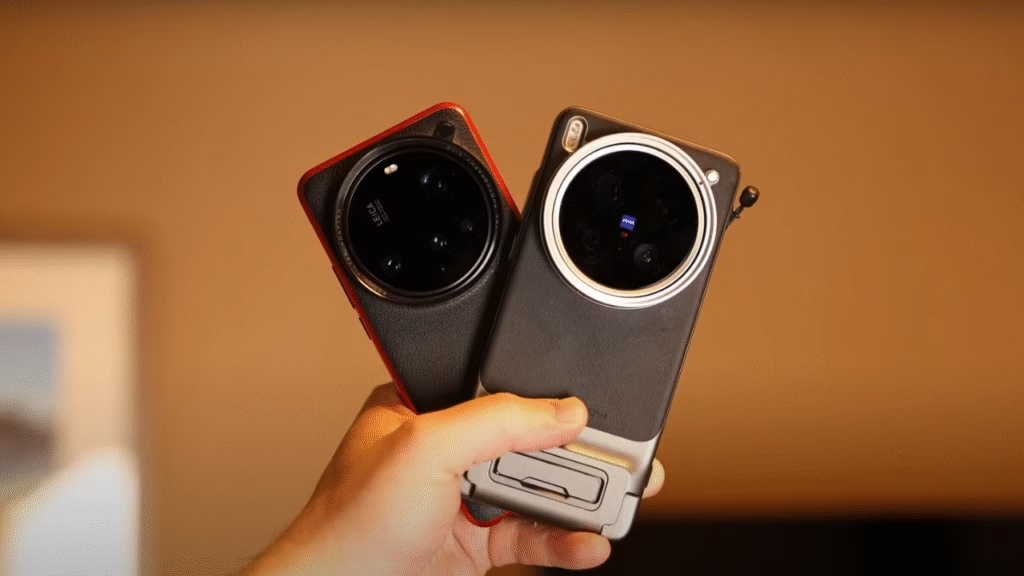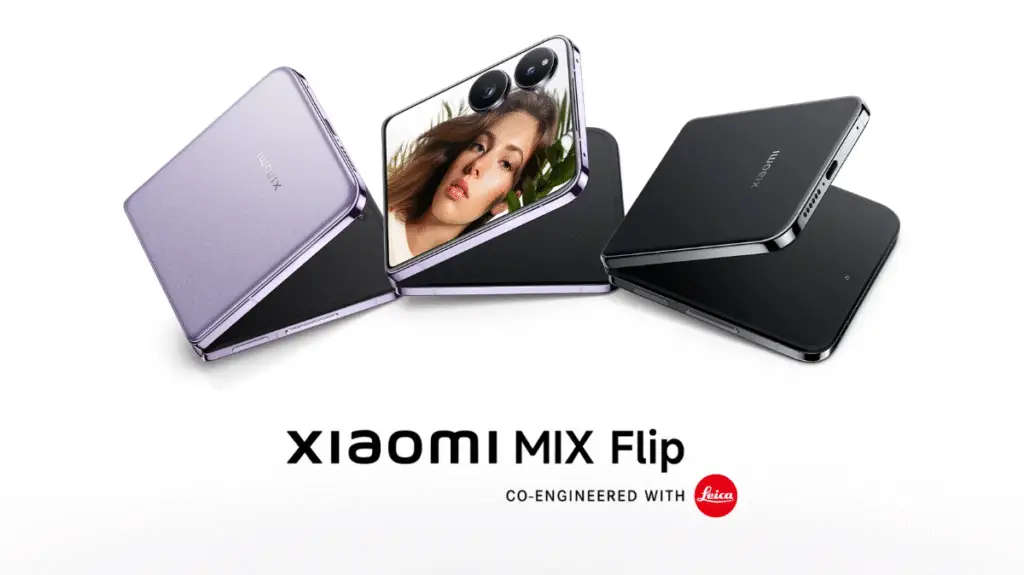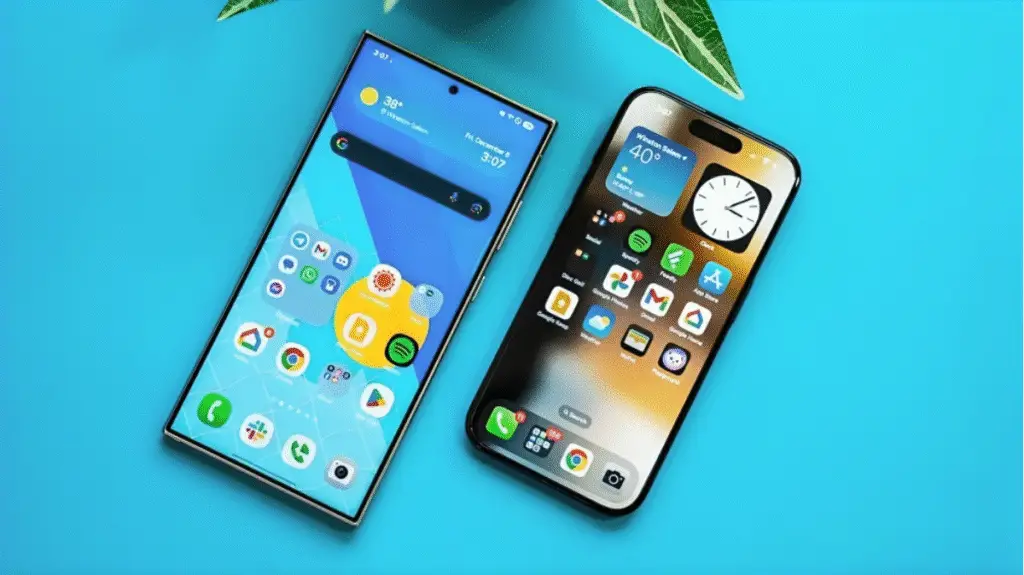
Specifications
| Feature | Xiaomi 15 Ultra | Vivo X200 Pro |
|---|---|---|
| Launch Date | 2025, February 27 | 2024, October 14 |
| Build & Protection | Aerospace-grade aluminum frame, Xiaomi Shield Glass 2.0, IP68 | Curved glass design, IP69 certified, Titanium frame |
| Display | 6.73″ LTPO AMOLED, 1440×3200, 120Hz, 3200 nits | 6.78″ AMOLED, 1.5K resolution, 120Hz, 4500 nits |
| Chipset | Snapdragon 8 Gen 4 (3nm) | MediaTek Dimensity 9400 (3nm) |
| RAM & Storage | 12GB/16GB LPDDR5X, 256GB/512GB/1TB UFS 4.1 | 12GB/16GB LPDDR5T, 256GB/512GB/1TB UFS 4.0 |
| Main Cameras | 50MP 1″ Wide + 50MP 3.2x + 200MP 5x + 50MP UltraWide (Leica tuned) | 50MP Wide + 200MP 4.3x Telephoto + 50MP Ultrawide (Zeiss optics) |
| Selfie Camera | 32MP, 4K@60fps | 32MP, 4K@60fps |
| Battery | 500mAh (global) / 6000mAh (China), 90W wired, 80W wireless | 6000mAh, 80W wired, 30W wireless |
| OS & Updates | Android 15, HyperOS, 4 years major updates | Android 15 (OriginOS), 3–4 years updates |
| Performance (AnTuTu) | ~2,100,000 (est.) | ~1,900,000 (est.) |
| Extra Features | In-display fingerprint, USB 3.2, Dolby Vision, Reverse wireless charging | In-display fingerprint, Zeiss Natural Color, IP69 rugged protection |
| Price (Base) | $899 / $899.00 | $849 / $799.00 |
Review
The smartphone race in 2025 has reached a new peak with the arrival of the Xiaomi 15 Ultra and the Vivo X200 Pro, two powerhouse flagships loaded with top-tier hardware, AI features, and camera technologies that redefine premium Android experiences. But which one gives you more for your money?
In this deep dive, we’ll break down everything from design, performance, and camera quality to battery life and pricing helping you decide between the Xiaomi 15 Ultra vs Vivo X200 Pro.
Design & Build Quality
Both phones offer a premium feel, but the design philosophies are different.
Xiaomi 15 Ultra comes with a glass front, a glass fiber or silicone polymer back, and an aluminum frame. It offers IP68 certification and even uses aerospace-grade materials to ensure durability. At 9.4mm thickness and 229g weight, it’s solid in hand, slightly bulky, but rugged.
Vivo X200 Pro, on the other hand, is a bit slimmer at 8.2mm and slightly lighter (223g–228g). It offers a glass or glass fiber back, an aluminum alloy frame, and IP69 protection, which means even higher resistance to water and dust.
Verdict: Vivo takes the edge in sleekness and water resistance, but Xiaomi feels more premium with aerospace-grade materials.
Camera Comparison
This is where things get really interesting.
Xiaomi 15 Ultra Camera Setup:
- Quad cameras: 50MP wide (1-inch sensor), 50MP telephoto (3x), 200MP periscope (4.3x), 50MP ultrawide, plus TOF 3D
- Front: 32MP wide
- Video: Up to 8K, Dolby Vision 10-bit recording, and 4K at 60fps with gyro-EIS
Vivo X200 Pro Camera Setup:
- Triple cameras: 50MP main, 200MP periscope (3.7x), 50MP ultrawide
- Front: 32MP ultrawide
- Video: 8K, 4K/120fps, Dolby Vision HDR, 10-bit Log support
Verdict: Xiaomi edges out with Leica lenses, 4-camera versatility, and pro photography features like a filter ring holder. Vivo, however, delivers outstanding zoom clarity and ultra-wide selfies.

Display Quality
Xiaomi 15 Ultra rocks a 6.73-inch LTPO AMOLED display with 1440 x 3200 resolution and 522 ppi. It supports Dolby Vision, HDR10+, HDR Vivid, and hits 3200 nits peak brightness with smooth 120Hz refresh rate.
Vivo X200 Pro comes with a slightly larger 6.78-inch LTPO AMOLED panel at 1260 x 2800 resolution and 452 ppi, also supporting Dolby Vision, HDR10+, and reaching 4500 nits peak brightness.
Verdict: Xiaomi has sharper resolution and better pixel density; Vivo wins on peak brightness. Both are among the best displays on any phone.
Performance & Software
Under the hood, both devices are powered by top-of-the-line chipsets:
Xiaomi 15 Ultra is equipped with the Snapdragon 8 Elite (3nm), featuring a unique Oryon V2 Phoenix architecture, combined with Adreno 830 GPU. It runs on HyperOS 2 (based on Android 15), with UFS 4.1 storage.
Vivo X200 Pro uses MediaTek Dimensity 9400 (3nm) a powerful alternative and features Immortalis-G925 GPU, on Funtouch OS 15 internationally and OriginOS 5 in China.
Benchmarks show Xiaomi outperforming with Geekbench score of 8152 vs Vivo’s AnTuTu of 2.6M, but both are blazing fast with smooth multitasking, gaming, and AI tasks.
Verdict: Xiaomi is a bit faster and better for gaming-heavy users. Vivo is no slouch either; both are future-proofed.
Battery Life & Charging
Xiaomi 15 Ultra packs a 5410mAh (Global) or 6000mAh (China) battery with 90W wired, 80W wireless, and 10W reverse wireless charging. It scored 16h 13m active use in tests.
Vivo X200 Pro features 5200–6000mAh battery depending on region, 90W wired, 30W wireless, and even reverse wired charging. It lasted around 15h 9m in real-world testing.
Verdict: Xiaomi has slightly better battery management, faster wireless charging, and more flexible charging tech.
Connectivity & Extras
Both phones offer Wi-Fi 7, Bluetooth 5.4 (Vivo) vs Bluetooth 6.0 (Xiaomi), satellite communication, dual stereo speakers, and no 3.5mm jack.
Xiaomi includes a barometer + DisplayPort output. Vivo includes Zeiss optics, color spectrum sensor, and 3D LUT import for pro video grading.
Verdict: Tie Xiaomi is more feature-rich for pros; Vivo is more photography-focused.
Price & Value
- Xiaomi 15 Ultra starts around ₹109,998 / €1066 / £948
- Vivo X200 Pro is priced at ₹87,980 / €1,099 / $790
Verdict: Vivo offers more value if your focus is great cameras and solid performance under ₹90K. Xiaomi justifies its higher price with top-shelf photography and raw power.
Final Verdict: Which One Wins?
If you want ultimate camera flexibility, pro-grade performance, and future-forward software, the Xiaomi 15 Ultra is the flagship king of 2025. But if you’re looking for a smartly priced phone with stellar cameras, fast performance, and a more refined design, then Vivo X200 Pro delivers huge value for money.
Buy Xiaomi 15 Ultra if you want:
- Leica-backed quad camera system
- Pro-level video tools
- Snapdragon 8 Elite power
- Higher resolution display and sharper visuals
Buy Vivo X200 Pro if you want:
- Slimmer design, higher brightness
- Great value under ₹90,000
- Zeiss optics and vibrant ultrawide selfies
- Flagship-grade zoom at lower price
FAQs
Which phone has the better camera setup?
The Xiaomi 15 Ultra offers a more advanced quad-camera system with a 1-inch sensor, Leica optics, and periscope zoom. The Vivo X200 Pro, while impressive, focuses more on balanced quality with its Zeiss-tuned optics and excellent low-light performance.
Is the Vivo X200 Pro good for gaming?
Yes. Powered by the MediaTek Dimensity 9400, it handles high-end games easily. Its vapor chamber cooling and 120Hz AMOLED screen provide a smooth, lag-free experience ideal for gamers.
Does the Xiaomi 15 Ultra support wireless charging?
Absolutely. It supports 80W wireless charging, which is faster than most wired chargers on other devices. It also includes 90W wired and 10W reverse wireless charging.
Which phone is better for long-term software updates?
The Xiaomi 15 Ultra runs Android 15 with 4 major Android upgrades promised, while Vivo’s update policy is less transparent. Xiaomi offers a clearer long-term update path.
Which display is better: Xiaomi 15 Ultra or Vivo X200 Pro?
Both have top-tier AMOLED screens, but Xiaomi offers a 1440p resolution and up to 3200 nits peak brightness. Vivo’s display is vibrant and smooth, but Xiaomi edges ahead in overall clarity and HDR performance.
How does battery life compare between the two?
The Xiaomi 15 Ultra has a larger battery in the Chinese version (6000mAh) and is well-optimized. Vivo X200 Pro also lasts long but charges slower wirelessly and lacks reverse wireless support.
Which phone offers better durability and build quality?
The Vivo X200 Pro features IP69 certification, making it more water/dust resistant than Xiaomi’s IP68 rating. However, Xiaomi uses aerospace-grade materials and reinforced glass, so both phones are premium and durable.
Follow Phoonomo to never miss an update



